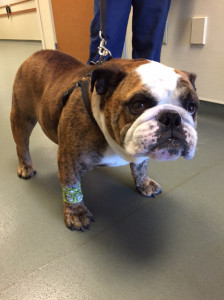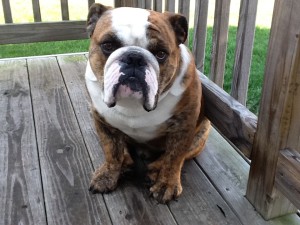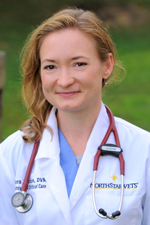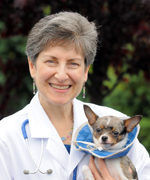-
Recent Posts
Archives
- October 2022
- August 2022
- May 2022
- March 2022
- January 2022
- December 2021
- September 2021
- July 2021
- June 2021
- May 2021
- April 2021
- February 2021
- January 2021
- November 2020
- October 2020
- September 2020
- June 2020
- April 2020
- March 2020
- February 2020
- January 2020
- December 2019
- November 2019
- October 2019
- September 2019
- June 2019
- March 2019
- February 2019
- January 2019
- December 2018
- November 2018
- October 2018
- August 2018
- July 2018
- June 2018
- May 2018
- April 2018
- March 2018
- February 2018
- January 2018
- December 2017
- November 2017
- October 2017
- September 2017
- August 2017
- July 2017
- June 2017
- May 2017
- April 2017
- March 2017
- February 2017
- January 2017
- December 2016
- November 2016
- August 2016
- July 2016
- June 2016
- May 2016
- April 2016
- March 2016
- February 2016
- January 2016
- December 2015
- November 2015
- October 2015
- September 2015
- August 2015
- July 2015
- June 2015
- May 2015
- April 2015
- March 2015
- December 2014
- June 2014
- May 2014
- April 2014
- November 2013
- September 2013
- August 2013
- July 2013
- June 2013
- May 2013
- March 2013
- January 2013
- November 2012
- October 2012
- July 2012
- December 2011
- November 2011
- October 2011
- September 2011
- August 2011
- July 2011
- June 2011
- May 2011
- April 2011
- March 2011
- February 2011
- January 2011
- December 2010
- November 2010
Categories
Brachycephalic Syndrome in Dogs
DJ is a 4-year-old, male, intact English Bulldog. He’s very friendly, outgoing, and handsome!
 DJ had previous episodes of difficulty breathing, mild airway blockage and swelling at the back of his mouth and throat that had responded to steroids in the past, but he had another severe episode recently and was referred to NorthStar VETS for further care.
DJ had previous episodes of difficulty breathing, mild airway blockage and swelling at the back of his mouth and throat that had responded to steroids in the past, but he had another severe episode recently and was referred to NorthStar VETS for further care.
He was getting progressively worse. After being admitted to NorthStar VETS and placed on oxygen and steroids, he developed progressive airway blockage and needed to have a tube placed into his windpipe for him to be able to breath.
We suspected DJ had brachycephalic syndrome causing upper airway blockage based on his breed and physical exam, which is common in Bulldogs and other brachycephalic dogs. Brachycephalic syndrome commonly includes narrow nasal passages (stenotic nares), laryngeal saccule tissue eversion, an extra-long soft palate, and an abnormally small windpipe (hypoplastic trachea) which combine to lead to airway blockage and difficulty breathing. DJ also had tonsil inflammation, which is not as commonly reported with Brachycephalic syndrome.
 After being evaluated by Dr. Barbara Maton of our Critical Care team, Dr. Joy Weinstein on our Surgery team performed the nasal surgery to open the nasal passages and let DJ breathe easier. The day after his surgery, DJ had some swelling and had to be kept cool and relaxed, but was discharged on the second day. His owners were amazed at how well he could breathe and how good he looked!
After being evaluated by Dr. Barbara Maton of our Critical Care team, Dr. Joy Weinstein on our Surgery team performed the nasal surgery to open the nasal passages and let DJ breathe easier. The day after his surgery, DJ had some swelling and had to be kept cool and relaxed, but was discharged on the second day. His owners were amazed at how well he could breathe and how good he looked!
DJ is now comfortable at home with his family. His activity is limited and he is fed soft foods while he heals from surgery, but now it’s behind him and he can breathe easy!
Brachycephalic airway problems can affect all of the dogs with cute short muzzles, especially bulldogs and pugs. These dogs can have a combination of problems that get worse over time without surgical intervention. We recommend early evaluation of the airway when they are under anesthesia for spay or neuter. With early intervention, opening of the nares and shortening of the elongated soft palate may be all that is necessary.
Many veterinarians in private practice would elect to refer the pup for airway surgery once they make the diagnosis of elongated soft palate and stenotic nares. Some of the veterinarians in practice that see a lot of brachycephalic dogs and will do the airway surgery at the time of the spay or neuter.
As time goes on and the dog breathes through a narrow airway, the laryngeal saccules can become everted and eventually the larynx can start to collapse. In some cases the tonsils become inflamed and enlarged as well. Dogs over 1-2 years of age often need to have the nares enlarged, the soft palate trimmed, the everted laryngeal saccules removed, and sometimes have the tonsils removed. In severe cases that do not respond to all of these surgical interventions and continue to have restricted air flow, a temporary tracheostomy or laryngeal arytenoid lateralization (tie-back) may be necessary. When an adult dog over 2-3 years old presents in a respiratory crisis, surgery becomes more complicated and sometimes additional surgical procedures have to be added if they are still struggling to breathe after the initial surgical procedures. Hypoplastic trachea (narrow trachea) can also be a significant component in bulldogs. This narrow trachea cannot be helped by surgery.
 Barbara Maton, DVM, DACVECC
Barbara Maton, DVM, DACVECC
Dr. Maton is originally from Florida, where she earned her undergraduate degree in biology from the University of North Florida, and studied veterinary medicine at the University of Florida, obtaining her DVM in 2006. She completed a rotating internship focused on emergency medicine at SouthPaws Veterinary Specialists and Emergency Center in Virginia, then moved to Pittsburgh where she worked as an emergency veterinarian for two years and completed her residency in the specialty in 2012. After helping to start a critical care service at an established veterinary referral hospital in Delaware, she joined NorthStar VETS in 2014. Her clinical and research interests include trauma, electrolyte derangements, anticoagulant therapies and CPR medicine.
 M. Joy Weinstein, VMD, DACVS
M. Joy Weinstein, VMD, DACVS
Dr. Weinstein was born and raised in Lakewood, New Jersey, and is a summa cum laude graduate of Muhlenberg College in Allentown, Pennsylvania. She graduated from the School of Veterinary Medicine at the University of Pennsylvania in 1983, and completed a three-year residency in small animal surgery at Tufts University/Angell Memorial Animal Hospital in 1988. She also completed a postdoctoral fellowship in orthopedic oncology at Massachusetts General Hospital and Tufts University School of Veterinary Medicine.
Dr. Weinstein was an assistant professor of orthopedic surgery at the Veterinary Hospital of the University of Pennsylvania from 1990-1994, and staff surgeon at Shrewsbury Animal Hospital for seven years. She joined NorthStar VETS in 2003. Her special interests include lameness evaluation, conservative treatment of orthopedic conditions, orthopedic surgery and surgical oncology. Dr. Weinstein is the longtime president of the Jersey Shore Veterinary Medical Association, and also served as chairperson of the Eastern Veterinary Orthopedic Society.
The information presented on this web site is not intended to take the place of your family veterinarian’s advice and is not intended to diagnose, treat, cure or prevent any disease. Discuss this information with your own veterinarian to determine what is right for your pet. All information is intended for your general knowledge only and is not a substitute for medical advice or treatment for specific medical conditions. We can not and do not give you medical advice via this blog. The information contained in this online site and emails is presented in summary form only and intended to provide broad understanding and knowledge. The information should not be considered complete and should not be used in place of a visit, call, consultation or advice of your veterinarian. We do not recommend the self-management of your pet’s health problems.
This entry was posted in Pets, Veterinary Medicine and tagged Barbara Maton, brachycephalic syndrome, DJ Codella, Dogs, hypoplastic trachea, Joy Weinstein, laryngeal saccule tissue eversion, NorthStar VETS, stenotic nares. Bookmark the permalink.





Leave a Reply